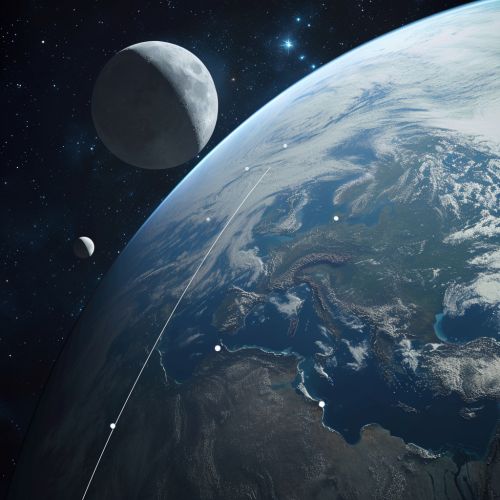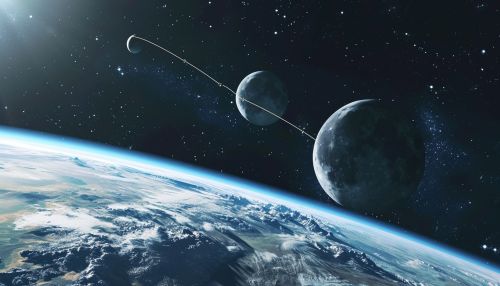Lagrange point
Introduction
The Lagrange points are positions in an orbital configuration of two large bodies, where a small object affected only by gravity can maintain a stable position relative to the two large bodies. In other words, they are points near two large bodies in space where the gravitational forces of the two large bodies and the centrifugal force experienced by a smaller object balance each other. These points, named after the Italian-French mathematician Joseph-Louis Lagrange, allow a small object to maintain a stable position relative to the two larger objects.


History
The concept of the Lagrange points was first introduced in an 1772 paper by Joseph-Louis Lagrange on the Three-body problem. The three-body problem is a classical question in physics and astronomy that attempts to predict the individual motions of three celestial bodies that are subject to no forces other than that of gravity. The Lagrange points are a solution to this problem, providing locations where a third, smaller body can maintain a stable or quasi-stable position relative to two larger bodies.
The Five Lagrange Points
There are five such points, labeled L1 to L5, all in the orbital plane of the two large bodies, for any given combination of two orbital bodies. For example, the Earth and the Moon have five Lagrange points between them.
L1
The L1 point lies on the line defined by the two large bodies and between them. It allows for the possibility of a relatively stable position for a spacecraft that monitors the larger of the two bodies. Many space observatories are placed at this point.
L2
The L2 point also lies on the line defined by the two large bodies, but beyond the smaller of the two. This is useful for spacecraft that need a quiet location to make sensitive observations of the universe.
L3
The L3 point lies on the line defined by the two large bodies, beyond the larger of the two. It has been suggested for use in science fiction literature as a place for an advanced civilization to hide a "Counter-Earth".
L4 and L5
The L4 and L5 points lie at the third corners of the two equilateral triangles in the plane of the orbit whose common vertex is at the center of mass of the two large bodies. The points are stable provided that the mass ratio of the two large bodies is greater than 24.96. This is the case for the Earth–Moon system, the Sun–Earth system, and, by a smaller margin, the Sun–Jupiter system.
Stability
The stability of the Lagrange points is an important consideration for the long-term success of any mission utilizing these points. The L4 and L5 points are stable and can host small bodies indefinitely, while the L1, L2, and L3 points are unstable on their own, any bodies there must make slight corrections to their position in order to stay put.
Applications
The Lagrange points have been used for a variety of purposes in space exploration. They provide a unique vantage point for scientific observations, serve as a potential location for establishing space colonies or telescopes, and are also of interest for their potential to trap interplanetary dust and asteroids.
